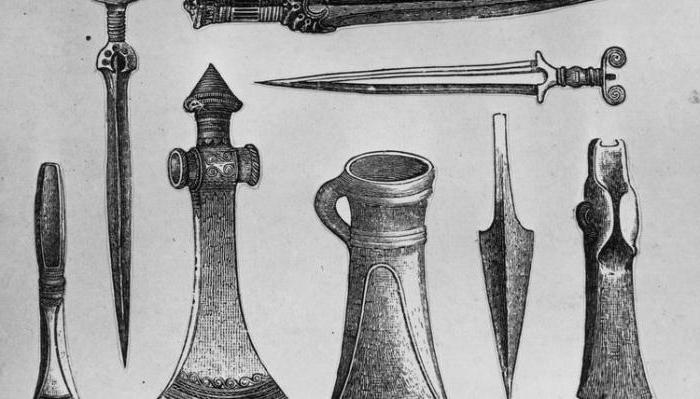Inventive activity is a creative process that allows a person to embody acquired knowledge in order to create the necessary conditions for a comfortable existence. This process allows you to continuously learn about the world, to satisfy spiritual needs, to develop in different directions, and it began from the time of the appearance of man.
It is the inventive activity of man that constantly changes the world and helps to find what was not originally envisioned by nature. Only people are characterized by such interaction with the outside world.
The first tools
The very first tools are an ax, a hammer and a knife. Our ancestors had stone axes a quarter of a million years ago. They began to use metal knives about 8 thousand years ago. The oldest nails known to archaeologists were created in the Middle East. They date back to around 3500 BC. They were made of copper and strengthened the statue, also made of copper. Around 3000 BC, the Egyptians cut wood and stone with saws. Traces of these files can be found on the blocks from which the pyramids were built.
First cars
A striking example of inventive activity is the creation of cars. The first gas-powered cars were designed by the Germans Benz (1885, three-wheeled) and Daimler (1887, four-wheeled). These cars were more reminiscent of carts, in which the harnessed horses were replaced by an internal combustion engine. The French Tanhar and Levassor designed a car that already looks more like the cars we are used to.
First skyscraper
The ten-story building of Home Insurance Building in Chicago (USA) was the first in the world built on the principle of a skyscraper in 1885. The basis for it was a skeleton of bearing steel structures. Therefore, its walls could be relatively thin and light, since the support was a reinforced concrete structure. Skyscrapers built this way can reach incredible heights today.
Window rims
Glass was first made 5 thousand years ago. It consists of molten quartz sand and soda. Before the invention of flat glass in France in the 17th century, production was complex and difficult. The easiest way was to make small round discs out of glass. The technique has changed, but the word "disk", which means a round plate, as before, is used in German as the name for rectangular window panes.
In the manufacture of flat glass, liquid glass was poured onto a metal plate. When it hardened, it was polished on both sides. Today, molten glass is poured onto molten tin.
First water pipes
In large cities of ancient civilizations - from India to Rome - still thousands of years ago, water pipelines with drinking water were separated from the sewage system. In the city of Mohenjo-Daro on the Indus River, about 4 thousand years ago, there were own water pipes and even public baths. In the huge city of Rome, more than a million inhabitants lived, drinking water from the mountains to the city through special pipes. The rich houses, of course, had their own baths and running water.
The invention of metals
It is difficult to imagine the modern world without metal products, they surround us everywhere, and it seems that they have always been. But this is also the result of human inventive activity. About 5 thousand years ago, people first mixed copper and tin and received a new metal - bronze, which played such an important role in the development of culture and technology that it was named after a whole historical period - the Bronze Age. The Iron Age began 3.5 thousand years ago, when the Hittites first melted iron ore into iron in the territory of modern Turkey. Iron was more suitable for manufacturing weapons and military equipment than bronze. He who owned iron, he owned the world. Cast iron was discovered by the Chinese 600 years before our era. Their blast furnaces were better than European ones, where cast iron was received only in 1400. This metal was stronger than iron.

In India, in 1000 BC, steel was made - carbon was added to iron, which made this metal harder and harder. The first stainless steel appeared only in 1913, when the Englishman Wirlley mixed steel with chrome.
Aluminum is the youngest metal. Given its lightness, it is made and processed in large quantities. In 1825, the Danish physicist Oersted first made aluminum by heating aluminum chloride with potassium. The raw material for the production of aluminum is bauxite, which is alumina.
Military inventions
The definition of "inventive activity" includes not only the realization of goals for a more comfortable existence, but also the development of military equipment and more effective military means. In the 19-20th centuries, improvement in this direction gained new momentum: submarines, tanks, and the first aircraft were created. The period of the Cold War led to the invention and accumulation of the most dangerous nuclear weapons for mankind, jet aircraft, nuclear submarines, chemical and biological weapons.
Nanotechnology
Nowadays, examples of inventive activity are genetic engineering, nanotechnology and robotics. It is difficult to imagine what civilization expects in the near future, because development affects all areas, from space exploration to the creation of artificial organisms and intelligence. Nowadays huge funds are invested in nanotechnology, a lot of scientists are engaged in development. The creation of nanorobots is predicted, which will be introduced into the human body to cleanse cancer cells and cholesterol, to deliver a certain drug to the affected organ. As DNA molecules create their copies from simple molecules during growth, nanorobots will be copied in the future using certain programs . There is a hypothesis that replacing a person with more viable machines is a natural stage in the development of society. Humanity can only speculate on what such inventive activity can lead to.